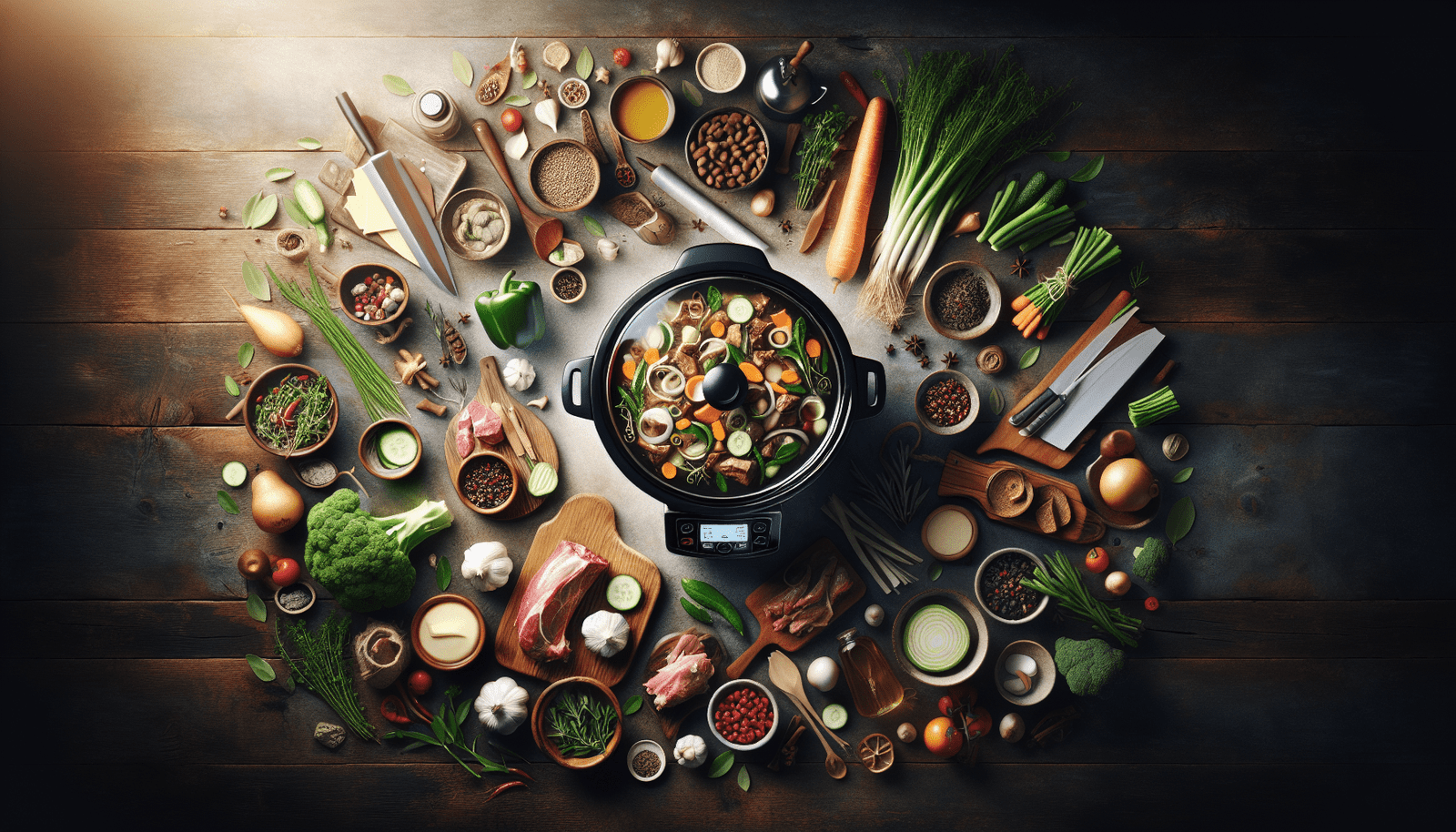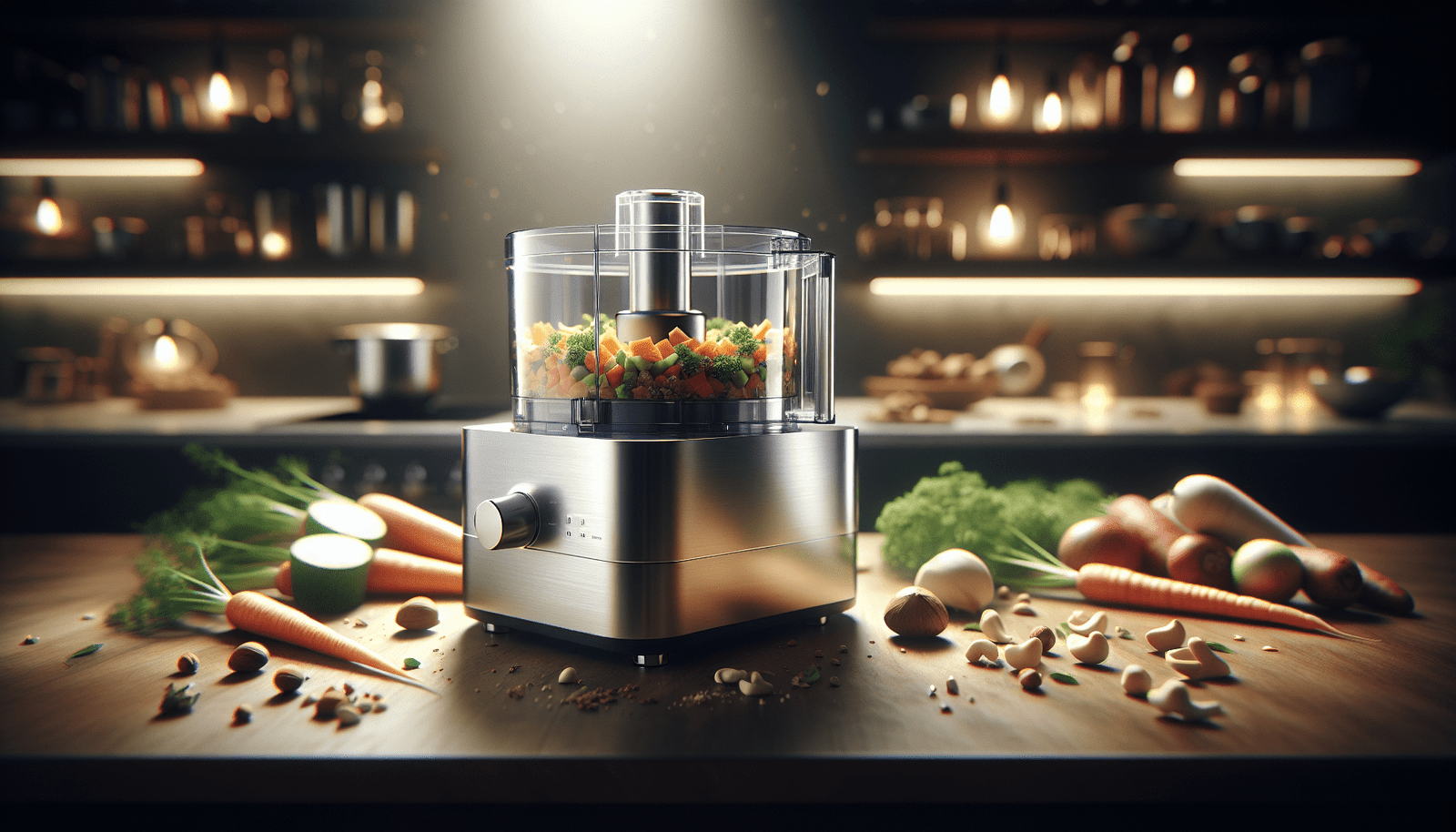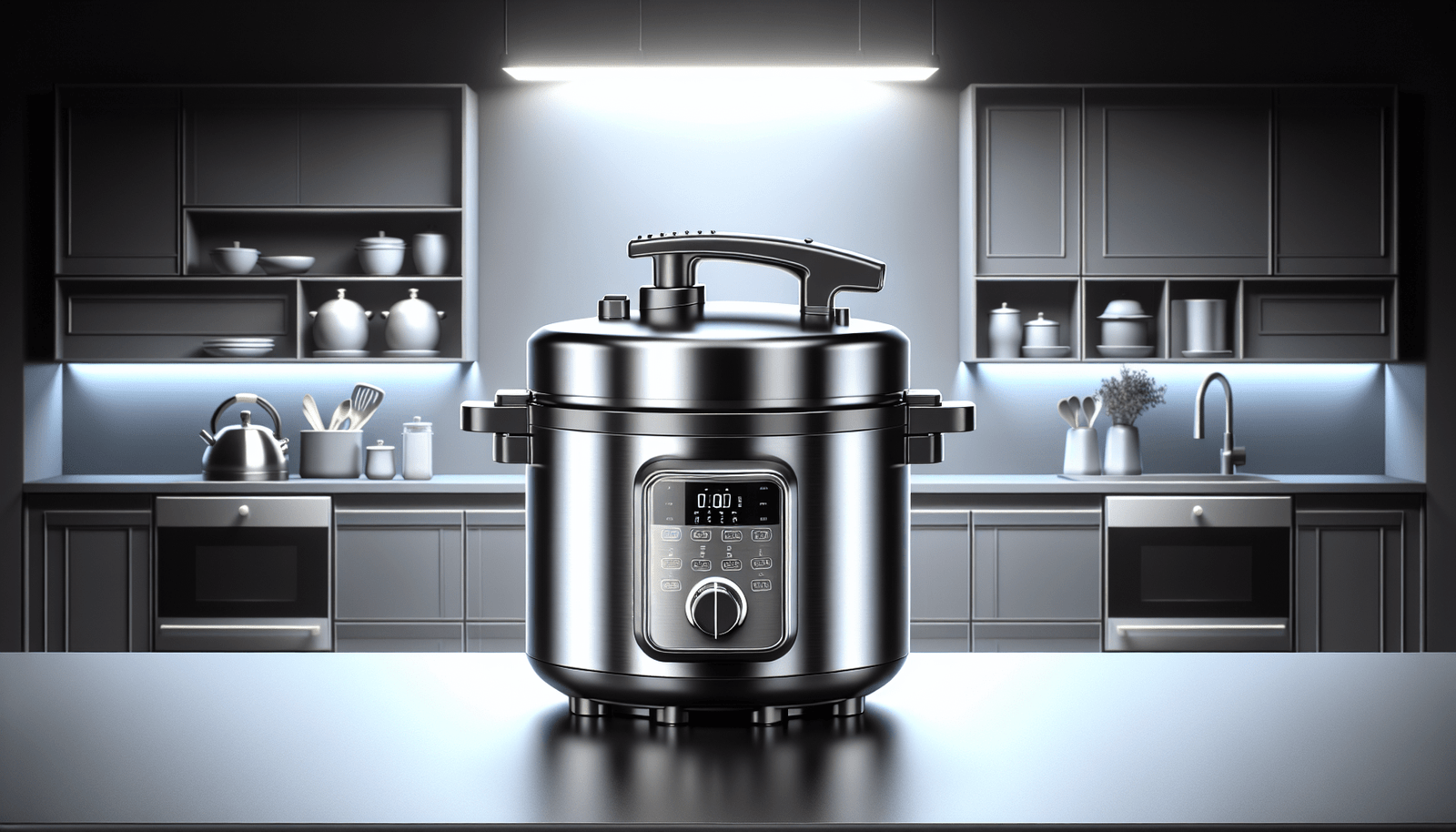Embrace the transformative journey of becoming a master baker with the latest in modern oven technology, all found within the innovative haven of Cooking Appliance World. Imagine your kitchen evolving into a dynamic space where efficiency meets creativity, enabling you to effortlessly bring your culinary visions to life. With an extensive array of the finest kitchen cooking appliances, gadgets, utensils, and supplies, you’re poised to explore new baking horizons. Benefit from expert reviews that illuminate the path to making well-informed choices, perfectly aligned with your baking aspirations and kitchen needs. Unlock exclusive deals to equip your kitchen with premium solutions, turning it into a sanctuary where every bake is a masterpiece in the making. Join the adventure at Cooking Appliance World, where your passion for baking flourishes and transforms, guided by the leading edge of oven technology.
Understanding Modern Ovens
In today’s dynamic kitchen environment, ovens have evolved far beyond their traditional roles. Gone are the days of merely baking or broiling—modern ovens come equipped with a host of capabilities designed to cater to the diverse culinary demands of both amateur bakers and professional chefs. Let’s delve into the world of modern ovens, focusing on their types, features, and benefits, especially when it comes to baking.
Types of modern ovens: Convection, Microwave, Steam, and Combination Ovens
When you’re browsing the aisles of Cooking Appliance World or perusing our website, you’ll encounter several types of ovens, each with its unique set of advantages. Convection ovens circulate hot air, ensuring evenly cooked dishes. Microwave ovens offer the convenience of quick reheating and cooking. Steam ovens use steam to cook, retaining moisture and nutrients in food. And combination ovens combine these technologies, offering versatility in cooking methods. Each type caters to different cooking and baking requirements, allowing you to choose based on your culinary goals.
Features of modern ovens: Smart connectivity, Precision cooking modes, Self-cleaning technology
The features of modern ovens are nothing short of revolutionary. With smart connectivity, you can control your oven remotely, preheating it while you’re still on your way home. Precision cooking modes eliminate guesswork, providing preset options for baking, roasting, and more, ensuring perfect results every time. Self-cleaning technology adds a layer of convenience, reducing the chore of oven maintenance. These features not only enhance cooking experiences but also integrate seamlessly with a modern lifestyle.
Benefits of baking with modern ovens: Consistent temperatures, Reduced cooking times, Versatile cooking methods
The benefits of using modern ovens for baking are plentiful. Enjoy consistent temperatures for even baking, reduced cooking times thanks to efficient heating technologies, and the ability to experiment with versatile cooking methods, from steam baking to broiling. Modern ovens empower you to achieve professional-quality results in your own kitchen, making baking more enjoyable and less time-consuming.
Choosing the Right Oven for Baking
Whether you’re an avid baker or just starting, selecting the right oven is crucial for achieving the best results. Let’s explore how to make this important decision.
Factors to consider: Size, Type, Features, and Budget
When choosing an oven, consider the size that fits your kitchen and meets your cooking needs. The type of oven—convection, microwave, steam, or combination—should align with your preferred baking and cooking methods. Evaluate the features that matter most to you, like smart technology or precision cooking modes. Finally, consider your budget; invest in a model that offers the best balance of price and performance.
Comparing oven types for baking: Which type suits your needs?
For baking enthusiasts, convection ovens are often preferred for their even heat distribution, ideal for cakes, cookies, and pastries. Steam ovens can be a game-changer for bread bakers, delivering loaves with a glossy, crackling crust. Microwave and combination ovens offer versatility and convenience for those with limited space or who appreciate the speed of microwave cooking. Consider what you bake most often to guide your decision.
The importance of oven capacity and rack positions for baking
The capacity of your oven and the ability to adjust rack positions greatly influence your baking experience. Larger ovens allow for baking multiple items simultaneously, ideal for big batches of cookies or multiple loaves of bread. Adjustable racks offer flexibility, ensuring that everything from towering layer cakes to delicate meringues can be baked optimally.
Preparing to Bake with Modern Ovens
Before you dive into baking, a few preparatory steps can ensure flawless results. Let’s cover the basics of preheating, rack positioning, and setting the correct baking mode.
Preheating: Why it’s essential and how to do it correctly
Preheating your oven is crucial; it ensures that your dish is cooked at the correct temperature from the start. Modern ovens often indicate when the preheat cycle is complete. Use this feature to avoid the common mistake of starting too early, which can lead to undercooked or unevenly baked goods.
Using oven racks effectively: Positioning for optimal air circulation
Positioning your baking dish on the correct oven rack promotes optimal air circulation, crucial for uniform baking. As a general rule, place cakes and cookies in the middle rack for even heat distribution. Adjust rack positions based on specific recipes or to achieve desired browning and crispness.
Setting the correct baking mode: Convection bake vs. conventional bake
Choosing the right baking mode can make a significant difference. Convection bake is ideal for evenly baked pastries and crusty bread due to its circulating hot air. Use conventional bake for recipes that require delicate, moist conditions, such as cheesecakes or custards. Experimenting with these settings will help you master your oven’s capabilities.
Baking Essentials: Tools and Accessories
Having the right tools and accessories can enhance your baking experience, ensuring every creation is a masterpiece. Here are some essentials every baker should consider.
Must-have baking tools for every baker
A well-equipped baking arsenal includes measuring cups and spoons, mixing bowls, a rolling pin, a spatula, and a whisk. Don’t forget a reliable kitchen scale for precise ingredient measurements—a secret to consistent baking success.
Choosing the right bakeware: Material considerations
The material of your bakeware affects your baking results. Aluminum pans heat quickly and evenly, making them great for most baking needs. Glass or ceramic dishes are better for pies and casseroles, offering aesthetic appeal from oven to table. Consider silicone bakeware for easy release of items like muffins and cakes.
Innovative baking accessories compatible with modern ovens
Explore innovative accessories designed for modern ovens, such as silicone baking mats for easy cleanup and consistent browning, or a digital probe thermometer to monitor precise internal temperatures. These modern tools can simplify the baking process and enhance your culinary creations.
Mastering Temperature and Timing
Temperature and timing are foundational elements of baking. Understanding and controlling them allows for perfect bakes every time.
Understanding the importance of accurate oven temperatures
Accurate oven temperatures are critical for achieving desired baking outcomes. An oven thermometer is a valuable tool for ensuring your oven’s internal temperature matches the set temperature, compensating for any inaccuracies and avoiding under or overbaked goods.
How to use a thermometer to ensure correct baking temperatures
Place an oven thermometer inside your oven to measure the actual temperature. Adjust the oven settings accordingly to reach the desired temperature before baking. Regularly checking and calibrating your oven ensures consistent baking results.
Adjusting bake times for different types of ovens
Different oven types and even individual models may require adjustments in baking times. Pay attention to visual cues and use a toothpick or cake tester to check for doneness. Note any adjustments for future reference, tailoring your baking times to your specific oven.
Utilizing Advanced Oven Features for Baking
Modern ovens come equipped with features that can elevate your baking. Let’s explore how to take advantage of these advanced options.
Exploring smart functions: Remote monitoring and control
Use your oven’s smart functions to monitor baking progress remotely and make adjustments as needed. This is especially handy for busy bakers who can manage their time more efficiently without compromising on baking quality.
Using specialized baking modes: Pizza, Bread Proof, and more
Specialized baking modes like Pizza or Bread Proof use specific temperature and humidity settings to achieve the best results. Experimenting with these modes can unlock new baking possibilities and perfect your favorite recipes.
Taking advantage of steam bake for superior crusts on bread and pastries
Steam bake introduces moisture into the oven, creating a crisp, shiny crust on bread and pastries. This feature is a game-changer for artisan bread bakers, delivering bakery-quality results right at home.
The Art of Baking Perfect Breads
Baking bread is an art that benefits greatly from modern oven features. Here are tips to achieve that perfect loaf.
The role of steam in bread baking: Achieving crispy crusts
Incorporating steam during the initial baking phase helps in forming a crispy, crackling crust on bread. Use the steam bake function or a pan of water in the oven to introduce moisture, mimicking professional steam ovens.
Tips for even baking: How to rotate bread for uniform color
Rotate your bread midway through baking to ensure even color and crust development. This compensates for any hot spots in your oven, resulting in a uniformly baked loaf.
Adjusting humidity and temperature for artisan breads
For artisan breads, finding the right balance between humidity and temperature can make all the difference. Start with high humidity and temperature to set the crust, then reduce to allow the bread to bake through. Experiment with your oven’s settings to find the perfect combination.
Creating Delectable Pastries and Desserts
The world of pastries and desserts is vast and varied. Here are tips to master their creation using modern ovens.
Balancing dry and wet ingredients for perfect pastry textures
Achieving the perfect texture in pastries begins with the correct balance of dry and wet ingredients. Follow recipes precisely and adjust based on the climate and your oven’s characteristics for consistent, delicious results.
Mastering the use of baking modes for delicate desserts
Delicate desserts like soufflés or custards require precise temperature control. Use your oven’s conventional bake setting to ensure gentle, even heat, avoiding the forced air of convection modes which can disrupt these sensitive mixtures.
The secret to flaky layers: Understanding fat distribution in dough
The key to flaky pastry layers lies in the distribution of fat within the dough. Keep your fats cold and your dough relaxed to allow distinct layers to form during baking, resulting in that sought-after flakiness.
Maintenance and Care for Your Oven
Proper maintenance ensures your oven remains in top condition, delivering consistent baking results.
Regular cleaning routines for longevity
Adopt regular cleaning routines to maintain your oven’s performance. Utilize the self-cleaning feature if available but follow up with manual cleaning of racks and interiors to remove any remaining debris.
Troubleshooting common oven problems
Familiarize yourself with troubleshooting common oven problems such as inaccurate temperatures or uneven baking. Calibration, proper cleaning, or replacing worn-out parts can often resolve these issues.
When to seek professional maintenance and repair
For persistent problems or when dealing with complex oven features, don’t hesitate to seek professional maintenance and repair. This ensures your oven’s longevity and optimal performance.
Joining the Community of Modern Bakers
Embrace the journey of modern baking by connecting with fellow enthusiasts.
Leveraging online forums and social media for tips and inspiration
Join online baking forums and social media groups to share experiences, tips, and inspiration. The baking community is a rich resource for learning and growth.
Participating in baking workshops and webinars
Enhance your skills by participating in baking workshops and webinars. These sessions can introduce you to new techniques and trends, further enriching your baking repertoire.
Showcasing your baking creations: Tips for photography and presentation
Take pride in your baking creations by learning photography and presentation techniques. Sharing your masterpieces on social media or with friends and family can be incredibly rewarding and can motivate you to explore new baking challenges.
Embarking on your modern baking journey can transform your culinary experiences, making each creation more enjoyable and refined. Embrace the advancements in oven technology and the wealth of resources available to help you perfect your craft. Happy baking!


